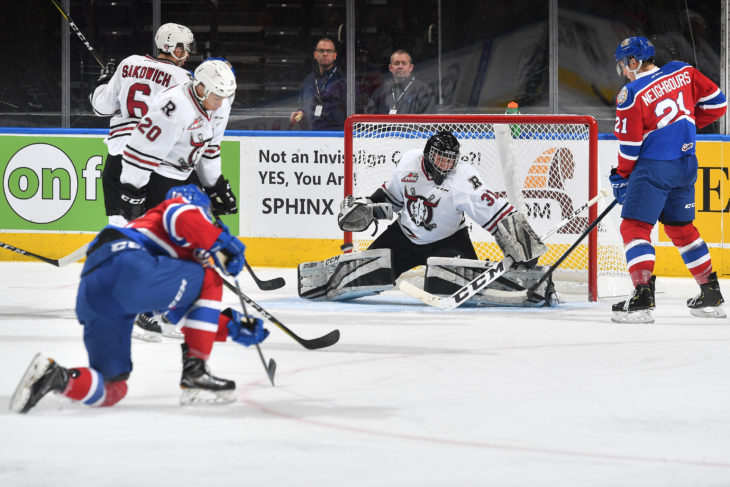With the WHL season expected to start on February 26th, 2021, there are still many questions yet to be answered.
We still do not know about the BC Division, and what a potential playoff will look like. In this article, we will look at the issue surrounding 20-year-old players.
Should the league allow each team to carry extra 20-year-olds due to the early cancellation of last season? Here are the pros and cons of each side.
Rules:
Before we start looking into this debate, we must review what the current rules are. Each team is allowed three 20-year-old players per roster. The player may turn 21 during the season, but not before January of that season. This means that any player born in 2000 is eligible for this WHL season.
Pros:
Allowing teams to carry extra 20-year-olds will allow these players to have a proper sendoff to their WHL careers. When the season was cut short last year, it deprived this age group of players of one last chance at a Memorial Cup run. Adding a few 20-year-old roster spots will also allow these players one last chance to be viewed by scouts. We have seen players in the past sign contracts or even be drafted into the NHL based on how they have produced in their final season and playoff run. A great example is Brett Leason who was drafted in 2019 based on his incredible showing that season.
Having the extra spots available also helps those players unsure of transitioning to university or pro careers. During a pandemic where rules and restrictions change frequently, it can be hard for some to make life-changing decisions. Let’s say a player agrees to play overseas, but then that team shut down for the year due to COVID outbreaks. Or a player agrees to a deal but is later cut due to North American ratios that exist in European leagues. Having the WHL available could be a vital lifeline to these players. The players understand and are comfortable in the WHL, and this could help make the transition into the next stage of their careers easier.
There still needs to be a cap on the number of 20-year-olds, but increasingly it to five allows for an additional 44 players to get another shot at glory. The 20-year-olds deserve to have their WHL careers end positively, rather than due to a once-in-a-century pandemic.

Cons:
The development of younger players is the major obstacle when it comes to allowing additional 20-year-olds. The WHL is all about developing, so when you take away two roster spots, it blocks younger players from getting in the lineup. Many players aged 16-19 have yet to play since last season ended, so they are looking for every opportunity available.
On top of roster positions, you also lose valuable ice time during the games.
A 16 or 17-year-old may get an opportunity to run a powerplay or could be an important part of a penalty kill, but with the 20-year-old there, loses that opportunity. Development is not just about playing in the games, it is about being put into situations that will help the player grow. In the NHL, we see cases all the time where players may play 70 games in a year, but never eclipse 10 minutes a game. They are also never given special teams work. Players develop a lot slower this way. If they make a mistake, they need to be put back out there so they can learn.
You need to put players in positions to develop and succeed, and that may be lost with additional 20-year-olds. Playing the younger kids allows for teams and the leagues to develop. You can’t get that development time back so the spots should go to younger players.
Final Thoughts:
In the end, someone is going to lose out in the scenario. You either have 20-year-olds not getting that proper WHL send-off and playoff run as they deserve, or you risk missed development of some younger players. No matter what is decided, the players selected for each team are going to work hard and develop this season. The WHL drops the puck in Alberta on February 26th.





